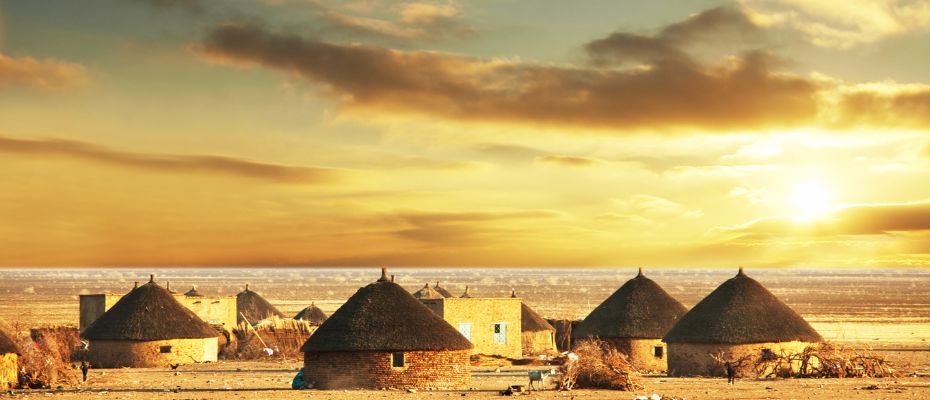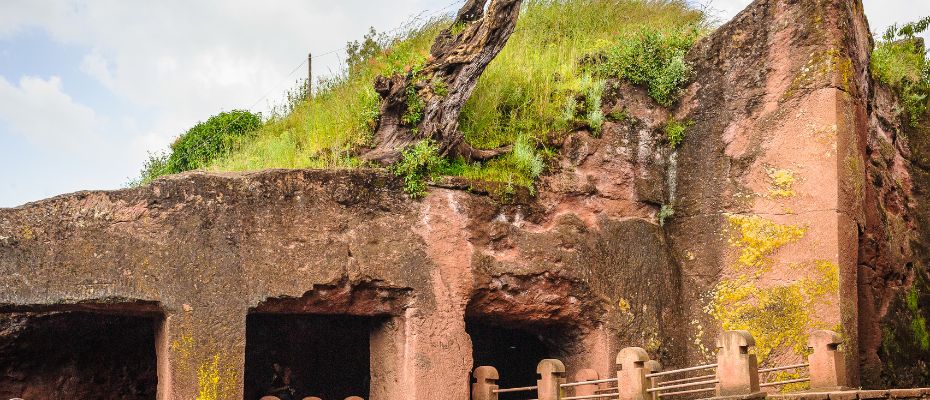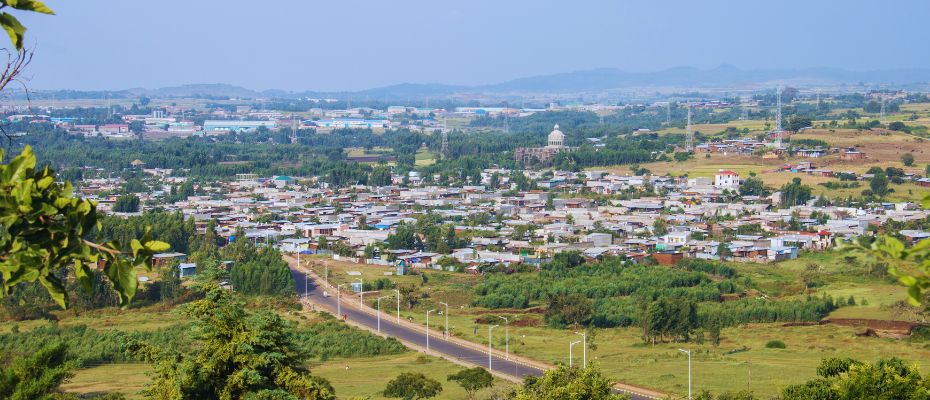Ethiopia is the oldest country in Africa and the Middle East, located in the northeast of the African continent without access to the sea. The capital is Addis Ababa, and it borders Eritrea, Sudan, Somalia, Djibouti, and Kenya.

Ethiopia has unique landscapes, high mountains, national parks, and wildlife, making it a popular tourist destination. The country is also known for being one of the world's largest coffee producers, with coffee considered the national drink.
The best time to visit Ethiopia is from early autumn to mid-winter, and late spring. The country has a special calendar, which lags behind the global one by eight years. Ethiopia is home to many historical, religious, and cultural attractions, and visitors can take part in various excursions. Rafting on the Blue Nile and Avash is popular from early to mid-autumn.
Ethiopia's Capital City
Addis Ababa, the capital of Ethiopia, is a city of diverse cultures. It features the magnificent palace of Menelik II, designed in neoclassical style, as well as the Coptic Church of St. George and the Cathedral of the Holy Trinity, places of pilgrimage since ancient times.
The Museum of Ethnography is located in Haili Selassie's palace, exhibiting ethnographic objects belonging to 80 different linguistic nationalities. Other attractions include the Palace of Africa Museum, Menegasha National Park, imperial castle of Menelik II, Art and Archaeological Museums, and the Mercato market, the largest in the country.
The market sells spices, camels, and souvenirs. The city also has a street named after Alexander Pushkin, whose great-grandfather lived in Ethiopia.
The City of Gondar, Ethiopia
Gondar is a city in Ethiopia known for its ancient castles and churches. The city was founded by Emperor Fasilidas and features his luxurious home and a unique pond with flora.
Notable attractions include five ancient castles, including Fasil-Gebbi, and the XIII-century Debre-Byrhan-Selassie church with incredible frescoes. The city is also known for its beautiful mountain panoramas and cool climate.
Lalibela City in Ethiopia
Lalibela is a significant Ethiopian city and pilgrimage centre with 11 rock-hewn churches, including the Church of the Savior of the World and the Church of the Virgin Mary. The churches house unique religious artefacts, including a Bible written over 600 years ago.

The Church of St. George is particularly remarkable, as it was built in the 12th century in the shape of a Greek cross, cut out of rock, and goes more than 25 meters into the ground.
Ethiopia's National Museum
The National Museum of Ethiopia in the capital is the main museum of the country with exhibits from prehistoric times to the present day. "Lucy", a skeleton of Australopithecus, can be found here, along with famous Ethiopian paintings and ceremonial robes of the royal family.
Fasil-Gebbi Fortress in Ethiopia
The Gondar fortress is a UNESCO-listed complex in Ethiopia, featuring temples, palaces, and castles from the XVII-XVIII centuries. It blends various architectural styles like Baroque, Arabic, Nubian, and Indian. The fortress was the seat of the emperors in the past and is now open to visitors.
Axum City, Ethiopia
Aksum is a historic city in northern Ethiopia, founded around 3,000 years ago and known for its archaeological sites, including 200 obelisks. According to legend, the city was ruled by Menelik I, the son of King Solomon.
The Church of the Virgin Mary is a famous attraction in Aksum, with a local legend suggesting that the Ark of the Covenant is hidden within its walls.
Simen National Park in Ethiopia
Simien Mountains National Park is a 22.5 thousand hectare park with Ras Dashen Peak reaching a height of 4620 meters. Visitors can observe various natural African zones such as mountain deserts, savannas, and highlands. The park is home to a diverse array of fauna.

Water-based Attractions in Ethiopia
Ethiopia has diverse water attractions, including Lake Tana - the source of the Blue Nile and a vital source of water and energy, Lake Abbe - known for its unusual limestone pillars and formations, and Chamo and Abaya lakes - popular for fishing.
The Awash River is home to a national park with antelopes and gazelles. Tis-Ysat Waterfall is the most beautiful waterfall of the Blue Nile and a must-see attraction.
Sof Omar Cave in Ethiopia
Sof-Omar Cave, found in the Bale National Park, is a breathtaking natural wonder formed by a river cutting through the mountains over thousands of years. It was once a religious center and revered site.
Visitors can explore the vast caverns, underground rivers, and stunning rock formations while learning about the cultural significance of the cave. The experience of walking through the labyrinthine tunnels and hearing the roar of the river is truly unforgettable.
Bahr Dar City, Ethiopia
Bahr Dar is a popular destination among travellers, known for its palm alleys and various attractions. Located on the southern coast of Lake Tana, it is surrounded by the former Emperor's palace, the Tis Ysat Waterfall and the 37 islands of Lake Tana, which is the source of the Blue Nile.
Harar City in Ethiopia

Harar is a unique and exotic city that attracts a lot of tourists. It is considered the fourth holiest city in Islam, with around 82 mosques, and also has several other interesting sites to visit. These include the Governor's Palace, a Coptic church, and various mosques, as well as some Instagrammable spots.
Volcanoes of Ethiopia
It's important to note that travelers should exercise caution when visiting active volcanoes, like Erta Ale. The area surrounding the volcano is considered a hostile environment, and visitors should be accompanied by a local guide.
Additionally, volcanic eruptions can be unpredictable and dangerous, so visitors should stay informed about any potential hazards and follow local authorities' guidance.
Applying for an Ethiopia eVisa
- Step 1: Complete the online application by providing your personal details and passport information.
- Step 2: Make an online payment securely using your credit card.
- Step 3: Check your email for the confirmation of payment and the receipt of your Ethiopia eVisa, which will be delivered electronically.
